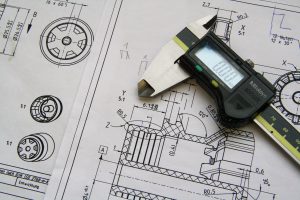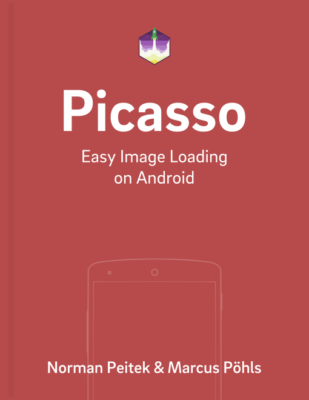In today’s digital age, the UX/UI design role in mobile applications has become integral to our daily lives. From ordering food, hailing a ride, managing finances, and staying connected with friends, apps have transformed how we live, work, and play. However, not all apps are equal, and their success often hinges on User Interface (UI) Design and User Experience (UX) Design per successful project.
First, are you tired of dealing with increasing bounce rates, unsatisfied customers, and decreasing website visitors? Don’t let these challenges hold your business back any longer! Your design can be too complex or too simple for the market. But what is the answer? You could invest in a great UI and UX design strategy to overcome multiple difficulties and give visitors a positive user experience.
Secondly, are you struggling to create a website or application that genuinely resonates with your users? Look no further! Discover the power of UI and UX design and how it helps transform businesses. As a rule of thumb, getting new customers and keeping them happy depends heavily on their experience when interacting with your brand. The user experience, in turn, depends on the design.
As well as the ultimate strategy and the construction of the best user interface design layout. In this article, we will explore the pivotal role of UX/UI in creating a memorable application experience, highlighting how design companies play a critical role in shaping the future of mobile platforms. Before delving into these designs’ importance, we’ll first clarify the meaning of the two design terms.
Understanding What A Strategic UX/UI Design And Development Process Entails
Regarding the UX/UI design process, User Experience (UX) and User Interface (UI) are some of the most confusing and misused terms in content development. A UI without UX is like a painter slapping paint onto a canvas without thought. At the same time, UX without UI is like the frame of a sculpture with no paper mache on it. A great product experience starts with a user experience design plan.
After the UX design has taken momentum, it’s followed by the UI development process — both are essential for the product project’s success. It’s important to understand that UX and UI go hand-in-hand; you can’t have one without the other. However, you don’t need to possess UI skills to be a UX designer, and vice versa—UX and UI constitute separate roles with separate processes and tasks!
Be that as it may, the main difference to bear in mind is this: UX design is all about the overall feel of the experience, while UI design is all about how the product’s interfaces look and function. In most cases, a UX designer considers the user’s entire journey to solve a particular problem; what steps do they take? What tasks do they need to complete? How straightforward is the experience?
Much of their work focuses on discovering what kinds of problems and pain points users come up against and how a specific product might solve them. An App Development Company plays a pivotal role in understanding the symbiotic relationship between UX and UI and leveraging it to create a memorable app experience. With that in mind, the two design elements help drive UX and UI projects.
The Design Elements:
- User Experience (UX): On the one hand, UX refers to a user’s overall experience while interacting with an application. It encompasses the user’s emotions, perceptions, and attitudes towards the app, shaped by ease of use, efficiency, accessibility, and overall satisfaction. A cheerful UX design ensures that users find the app valuable, enjoyable, and easy to navigate.
- User Interface (UI): On the other hand, UI focuses on an app’s visual and interactive elements. It includes the layout, design, buttons, icons, and all the practical elements users interact with on the screen. An effective UI design aims to create an aesthetically pleasing and intuitive interface that seamlessly guides users through the app’s features and functions.
In that case, effective digital products and websites must incorporate both UI and UX design. Despite their differences, they combine to produce a great user experience that caters to users’ requirements and aids organizations in achieving their objectives. Designers may create practical UI and UX design projects that offer value to users and promote business growth by considering users’ demands.
Generally speaking, UX/UI design experts may conduct extensive user research to determine the target users and their needs concerning a particular product. In addition, they may map out the user’s journey across a product, considering information architecture — like how the content is organized and labeled across a product — and what kinds of features the user might need.
Eventually, they’ll create website application wireframes that set out the bare-bones blueprints for the product. With the skeleton of the product mapped out, the UI designer steps in to bring it to life. The UI designer considers all the visual aspects of the user’s journey, including all the individual screens and touchpoints the user might encounter, such as tapping a button or scrolling down.
Getting To Know The Crucial Connection Between UX And UI In Project Design
UX and UI are often used interchangeably, but they are distinct components of app design that work in tandem to create a cohesive user experience. The UI serves as the medium through which users interact with the app, while the UX focuses on optimizing that interaction for the user’s benefit. For your information, creative UX/UI content designers will go through the design thinking process.
In addition, webmasters maintain a human-centered approach to design. Both have a market research aspect to their job (although the UX designer will naturally delve deeper into user testing). Alongside these overlapping traits, it’s not uncommon for UX and product designers to use the same tools during the design process. Both designers commonly use wireframing tools like Balsamiq and Figma.
As well as user mapping software like Lucid Chart and Overflow — product and UX designers use the same tools, with a few exceptions! Imagine an application as a car: the UI represents the exterior design, dashboard layout, and controls, while the UX is the overall driving experience, including comfort, safety, and convenience. A sleek car design layout can attract potential buyers.
Still, driving an optimal user experience will determine whether they become satisfied customers or abandon the vehicle after a frustrating ride. While UX maps out the journey, the UI designer focuses on all the details that make this journey possible. That’s not to say that UI design is all about looks; Most UI designers significantly impact whether or not a product is accessible and inclusive.
The Essential UX/UI Design Impacts On Mobile Application Project Success
You might wonder if one is more important, but the two design methods are crucial! Keeping aside all the common misconceptions, it is essential to understand that even significant businesses must pay attention to startup product development and create a good UI and UX. At the same time, even companies focusing on success need to understand the power of user interface and experience.
UX and UI go hand in hand, and while there are millions of examples of great products with one and not the other, imagine how much more successful they might have been when strong in both fields. In other words, regarding product design, UX and UI complement each other—and in today’s competitive market, getting both aspects right is an absolute must. We may often ask some questions.
Resource Reference: Who Are Citizen Developers? 5 Benefits & Steps To Become One
Such as “How can different color combinations create contrast and enhance readability? Or “What color pairings cater to color blindness?” Whether working as a UX designer or a UI designer, it’s helpful to understand both; after all, you’ll inevitably be working together. Good UI can never make up for bad UX; it’s like picking up a beautifully decorated cake that tastes awful when you bite it.
Hopefully, you’re now seeing how UX and UI design merge. On the flip side, have you ever come across a stunning website only to find that, beyond the mind-blowing animations and on-point website color schemes, it’s a real pain to use? With that in mind, there are some other notable reasons why the UX/UI design elements are critical to the success of an application development project.
1. Impressions Matter
Just as a first impression sets the tone for human interaction, an app’s UI is the user’s first encounter with the digital product. A visually appealing and well-organized interface immediately engages users and piques their interest. App development companies must ensure their UI designs are visually appealing and consistent with the app’s purpose and brand identity.
2. Efficiency And Usability
A well-crafted UX design ensures users can accomplish their tasks efficiently and intuitively. When users can easily navigate an app and complete desired actions without frustration, they are more likely to stay engaged and return for future interactions. App development companies must conduct user research and testing to refine the app’s UX, making it as user-friendly as possible.
3. Problems Solving
On the one hand, UX is about identifying and solving user problems. On the other hand, UI is about creating intuitive, aesthetically pleasing, interactive interfaces. Technically, UX usually comes first in product design, followed by UI. The UX designer maps out the bare bones of the user journey; the UI designer then fills it in with visual and interactive elements. Notwithstanding, UX can apply to any product, service, or experience. However, UI is specific to digital products and experiences.
4. Reduced Learning Curve
An effective UI simplifies the learning curve for new users. Icons, buttons, and menus should be self-explanatory, minimizing the need for extensive tutorials or guidance. A well-designed UI guides users through the app’s features, ensuring they can quickly understand how to use it to their advantage.
5. Accessibility And Inclusivity
A memorable app experience is accessible to many users, including those with disabilities. App development companies must prioritize accessibility features such as screen readers, voice commands, and adaptable text sizes to ensure that the app is inclusive and usable by everyone.
6. Consistency Across Platforms
With many devices and operating systems available, app development companies must ensure that their UI/UX remains consistent across different platforms. Whether users access the app on a smartphone, tablet, or desktop, they should have a consistent and seamless experience, maintaining the app’s brand identity.
7. Retention And Loyalty
A memorable app experience doesn’t end with the first use; it extends to user retention and loyalty. When an app consistently delivers a positive UX/UI, users are likelier to become loyal customers, recommend the app to others, and continue using it over time. This, in turn, can drive long-term success and profitability for app development companies.
8. Feedback And Iteration
The process of creating a memorable app experience is an ongoing one. App development companies must actively seek user feedback and analyze data to identify areas for improvement in both UX and UI. Continuous iteration based on user insights allows apps to evolve and stay relevant in a competitive market.
9. Seamless Tools Integration
UI design is like the icing on the UX cake. Imagine you come up with a fantastic idea for an app, something that’s missing from the market and could genuinely change people’s lives for the better. When you hire a UX designer to conduct user experience research, they can also help you determine exactly what integration features your application should have. As well as how the entire user journey should be mapped out.
10. Limitless Design Optimization
Your website application offers something that your target audience needs and wants. However, when they download it, they find the text on each screen is barely legible (think the yellow text on a white background). Moreover, if the Call To Action (CTA) buttons are too close together, users may keep hitting the wrong button by mistake! Such a classic case of lousy UI can destroy good UX.
The Main UX/UI Design Challenges That Mobile Application Developers Face
While creating a memorable app experience is a goal for app development companies, there are challenges they must navigate:
- Diverse User Base: Apps often have users from diverse backgrounds and demographics. Creating a universal UX/UI design that caters to this broad audience can be challenging but is essential for inclusivity.
- Evolving Technology: Rapid technological advancements, such as new devices, screen sizes, and input methods, require app development companies to adapt their designs to ensure compatibility and an optimal user experience.
- Competitive Landscape: The app market is highly competitive, with millions of apps vying for users’ attention. An app development company must continually innovate and differentiate its offerings to stand out.
- Changing Expectations: User expectations are continually evolving. What was considered a great user experience yesterday may not meet today’s standards. Staying attuned to changing user preferences is crucial.
- Aesthetics Functionality: Striking the right balance between a visually appealing UI and functional UX can be challenging. Overly complex or cluttered designs can hinder usability, while excessively simplistic designs may lack visual appeal.
In a nutshell, when it comes to product design, UX and UI complement each other—and in today’s competitive market, getting both aspects right is an absolute must. Whether you work as a user experience, user interface, product design expert, or as a mix of a design webmaster, it’s helpful to understand what each style offers to clients. After all, you’ll inevitably be working together.
What The UX/UI Design Future In A Mobile Application Environment Holds
As technology advances and user expectations evolve, the role of UX and UI in app development companies will only become more critical. Here are some trends and predictions for the future of UX/UI in the industry:
- Augmented Reality And Virtual Reality: Technically, Virtual Reality (VR) and Augmented Reality (AR) technologies increasingly integrate into mobile apps. App development companies must design immersive and intuitive UI/UX to provide engaging experiences in these virtual environments.
- Voice And Conversational Interfaces: Voice-activated and conversational interfaces, like chatbots and virtual assistants, are gaining prominence. App developers must focus on designing natural and efficient interactions in this space.
- Personalization And AI: AI-driven personalization will be more significant in tailoring UX/UI to individual user preferences. App development companies will leverage AI Algorithms to deliver highly personalized content and experiences.
- Gesture-Based Interfaces: As touchless interactions gain popularity, gesture-based UI designs will become more prevalent. App developers will need to design intuitive and responsive gesture controls.
- User Accessibility Statements: Ensuring accessibility for users with disabilities will remain a top priority. App development companies must comply with accessibility standards and guidelines to provide a seamless experience for all users.
In addition, there is also the role of Data Privacy and Cyber Security Measures to consider integrating into new application development processes. With growing concerns about data privacy, an app development company must prioritize secure and transparent user experience design and user interface development to build the target user’s business, brand, or product trust.
Takeaway Notes:
Technically, the notable difference between a product UI design expert and a UX design webmaster is that product designers and UX designers have very similar jobs—but it’s arguable that a product designer has a few more responsibilities. Notably, this is easily recognizable in terms of thinking of the process as a whole, including the business, strategy, and business branding.
That’s not to say that a product designer does more work than a UX designer! Depending on the product and company, it’s likely that both roles will involve the same level of hard work and dedication to ensuring the product is the best it can be. The jobs are so similar that they’re easily interchangeable. This is why product design to UX design and vice versa are extremely well-trodden.
Generally speaking, application development companies are crucial in creating memorable user experiences by prioritizing user experience and interface design. The successful fusion of these elements results in visually appealing, user-friendly, and efficient apps catering to diverse user needs. As technology evolves, application development companies must remain agile and adaptable.
They must stay committed to floating at the forefront of UX/UI design to create mobile application platforms that leave a lasting positive impression on users. In an increasingly competitive landscape, the ability to deliver a memorable app experience will be a crucial determinant of an application’s success and longevity in the market. Please let us know your thoughts in our comments.








Hey! I simply wish to give a huge thumbs up for the great data you’ve got right here on this post. I shall be coming again to your blog for extra soon.
Do you have a spam problem on this website;
I also am a blogger, and I was wondering your situation;
we have developed some nice practices and we are looking to exchange methods with others, please shoot me an e-mail if interested.
Comments are closed.